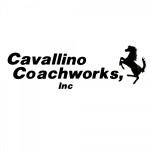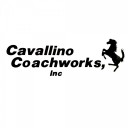Factory and Aftermarket Parts: How do They Differ?
It is almost always more expensive to take a car to a dealership for repairs than to a regular mechanic. One reason for this is related to the type of parts the dealership uses versus the type of parts most mechanics use. Dealerships will almost always use OE or Original Equipment parts, while the majority of mechanics will use what are called aftermarket parts.
At Cavallino Coachworks in Stockton, CA we often encounter this dilemma all the time, but in almost every situation we will opt for an OE part over aftermarket parts.
Original Equipment parts are the parts that were specifically commissioned by the manufacturer for the specific vehicle. Aftermarket parts are parts that are made by other manufacturers to match the same basic specifications as the original equipment parts. In theory, there is generally no difference between the two, but in reality there can be a vast difference. Here are some of the key differences, so you can decide which one is right for you.
1. Quality Control: Cars are expensive, so auto manufacturers want to have a good reputation for building quality, long-lasting vehicles. As a result, they tend to ensure that all of the parts that are used in their cars meet certain standards and specifications. Aftermarket parts are essentially "knock-offs." While they can be significantly cheaper than original manufacturer parts, they also sometimes lack the same quality. This means they can often wear out more quickly. In some cases, this is not a big deal, particularly if the part is easily replaced. In other cases, however, the labor to replace the part is far more expensive than the part itself, which means you want to use OE parts whenever possible.
2. Voids Some Warranties: In many cases, when you use aftermarket rather than OE parts, it can void the manufacturer's warranties. In some cases, when the warranty is expired anyway, car owners will take their car to a regular mechanic to have repairs performed with aftermarket parts. Unfortunately, this can also cause problems down the road with future car owners. When people buy used cars, they often purchase a new warranty. Just like an original warrantee, however, that warranties also only covers any repairs that were done using OE parts.
3. Minor Discrepancies: While a single millimeter difference between the length or circumference of an OE part and an aftermarket part may not seem like a big deal, but it can mean the difference between a part that fits and works properly and one that does not. Remember, an engine is a complicated series of moving pieces and parts. Over time, one part that is not operating properly can severely damage the entire system.
Cavallino Coachworks in Stockton, CA 95203-1915
Sources: Cartalk and DIY Network








Social